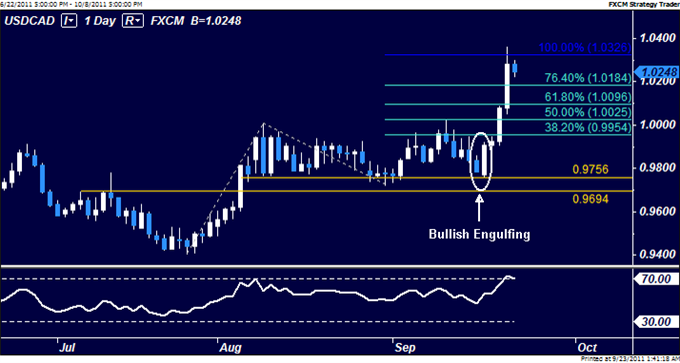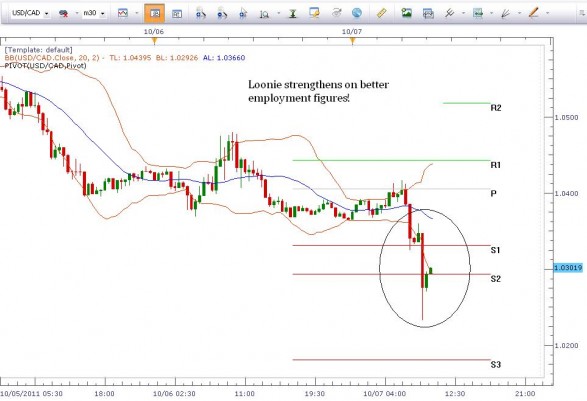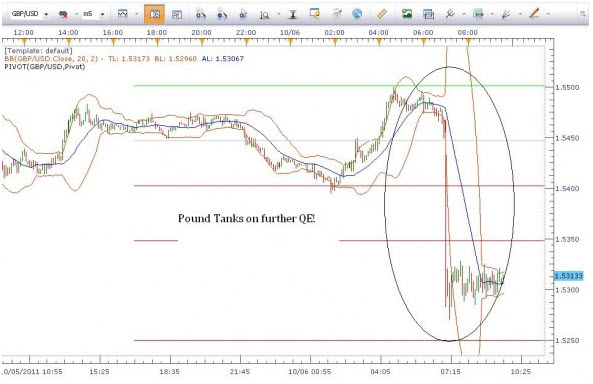USDCAD: Pullback to Offer Long Entry Point
USDCAD put in a Bullish Engulfing candlestick pattern above range support at 0.9756 and launched aggressively higher, nudging the measured Fibonacci extension objective at 1.0326. RSI studies are now at their most overbought in over a year and we will look for a corrective pullback over the days ahead as an opportunity to enter long.
 سربلندوپیروزباشید.
سربلندوپیروزباشید.
USDCAD put in a Bullish Engulfing candlestick pattern above range support at 0.9756 and launched aggressively higher, nudging the measured Fibonacci extension objective at 1.0326. RSI studies are now at their most overbought in over a year and we will look for a corrective pullback over the days ahead as an opportunity to enter long.
 سربلندوپیروزباشید.
سربلندوپیروزباشید.














 14 GMT
14 GMT [/IMG]
[/IMG] 23 GMT
23 GMT  [/IMG]
[/IMG]

 </center>Just because we've been using a bull market as my primary example doesn't mean the Elliott Wave Theory doesn't work on bear markets. The same 5-3 wave pattern can look like this:
</center>Just because we've been using a bull market as my primary example doesn't mean the Elliott Wave Theory doesn't work on bear markets. The same 5-3 wave pattern can look like this: </center>Types of Corrective Wave Patterns
</center>Types of Corrective Wave Patterns
 </center>Zig-zag formations are very steep moves in price that goes against the predominant trend. Wave B is typically shortest in length compared to Waves A and C. These zig-zag patterns can happen twice or even thrice in a correction (2 to 3 zig-zag patterns linked together). Like with all waves, each of the waves in zig-zag patterns could be broken up into 5-wave patterns.
</center>Zig-zag formations are very steep moves in price that goes against the predominant trend. Wave B is typically shortest in length compared to Waves A and C. These zig-zag patterns can happen twice or even thrice in a correction (2 to 3 zig-zag patterns linked together). Like with all waves, each of the waves in zig-zag patterns could be broken up into 5-wave patterns. </center>Flat formations are simple sideways corrective waves. In flats, the lengths of the waves are GENERALLY equal in length, with wave B reversing wave A's move and wave C undoing wave B's move. We say generally because wave B can sometimes go beyond the beginning of wave A.
</center>Flat formations are simple sideways corrective waves. In flats, the lengths of the waves are GENERALLY equal in length, with wave B reversing wave A's move and wave C undoing wave B's move. We say generally because wave B can sometimes go beyond the beginning of wave A. </center>Triangle formations are corrective patterns that are bound by either converging or diverging trend lines. Triangles are made up of 5-waves that move against the trend in a sideways fashion. These triangles can be symmetrical, descending, ascending, or expanding.
</center>Triangle formations are corrective patterns that are bound by either converging or diverging trend lines. Triangles are made up of 5-waves that move against the trend in a sideways fashion. These triangles can be symmetrical, descending, ascending, or expanding. </center>That still looks kind of confusing. Let's splash some color on this bad boy.
</center>That still looks kind of confusing. Let's splash some color on this bad boy. </center>Ah magnifico! It's so pretty! We like colors, so we've color-coded each wave along with its wave count.
</center>Ah magnifico! It's so pretty! We like colors, so we've color-coded each wave along with its wave count.










نظر